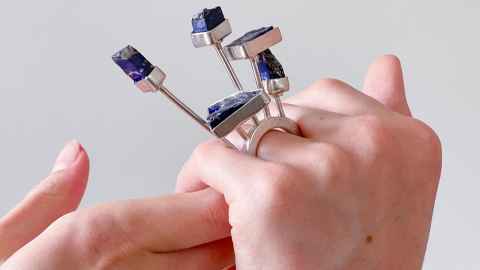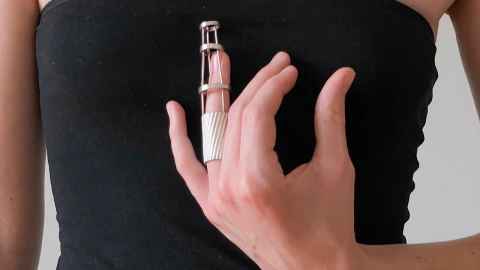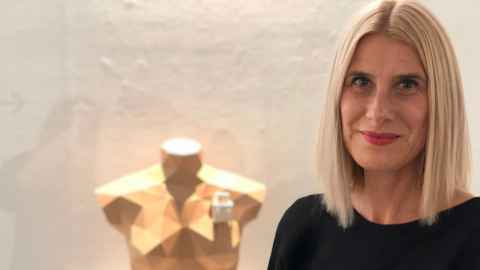Modernist architecture of West Auckland inspires contemporary take on jewellery
19 April 2022
An exhibition featuring 18 “pieces of adornment” designed and made by Gina Hochstein, School of Architecture and Planning, explores the relationship between jewellery and the modernist architecture of the 1950s and 1960s in Titirangi, Auckland, and the lives of women who lived in those buildings.

Gina is a PhD candidate at the University where she is expanding on her Master of Architecture thesis, for which she created jewellery based on the modernist houses of Titirangi.
This included earrings based on the north and south elevations of the Bardwell House, the modernist house she grew up in designed by a student of Mies van der Rohe, a ring based on the Brian Brake House designed by Ron Sang which she grew up next door to, a Stuckey Pole House brooch and many other pieces of jewellery.
For her PhD she is continuing her research into the relationship between jewellery and architecture and the relationship between the human body and the landscape as sites and influences for both, but expanding that to include research into the lives of women who lived in those houses in the middle of the last century.
This is a neglected aspect of architectural history, she says, which is typically focused on the tangible artefact (the brick and mortar of the houses) most of which were designed by men. She instead is exploring the less tangible lived experience of the women who lived in those modernist houses
“Hearing their lived experience, rather than the more formal architectural theory of history, enriches our architectural history,” she says.
Half of the 15 women she has interviewed so far are in their 90s. “Talking to them was an utter pleasure. Many of them said they hadn’t talked about their lives in detail for many years, if at all.”

The new forms of modernist architecture being explored and built at that time in Titirangi were in some ways liberating for women – the kitchen wasn’t shut off from the rest of the house, but more integrated into open plan spaces, for instance. Yet women were still expected to fulfil their gender-prescribed roles.
“The women were part of an enclave of intellectuals, arts practitioners and architects, and part of a counter-cultural Bohemian community in West Auckland,” she says.
“They were painters, weavers, jewellers, sculptors, fabric designers and clothing designers, but they still were expected to take on the traditional role of the ‘50s housewife’. These women were incredibly creative but there was a sense of impingement, a lack of equity.”
Gina has referenced that tension in her new works of jewellery as well as the ritualistic nature of where you place pieces to ornament. The Frame Ring features the modernist window of the Orr Walker house, a double ‘window’, which is attached to one side.
“When you’re wearing it, you have to use the left hand to hold the window open. This is to indicate the burden of gender for women in the 50s and 60s.”
The Corset Ring, a cylindrical structure designed for the index finger (traditionally the site for a wedding ring), extends from the base of the finger, beyond the top of it. “It’s a beautiful adornment, but you can’t bend your finger while wearing it. It’s really pushing the boundaries of the body politic.”
The Landscape ring, meanwhile, made of lapis lazuli and silver, features five different-shaped settings on five different miniature ‘poles’, referencing the geology beneath and the bush-covered sloping sites that characterise the Titirangi area. “It does not allow the fingers to sit comfortably either side of the ring.”
Her jewellery is a medium through which she asks, what did it mean to be a housewife in that time? “You couldn’t play the piano wearing my rings or cook a meal.”
Making jewellery is more than conscious creating, says Gina. “In my days in the jewellery studio, I respond to heat, flame, powdering of flux metal and melting solder.
“These elements together become alchemy and a form of visual culture. My art is visceral forms of representation, the result of academic reading and writing, and the interpretation of memories and stories from women during this period of time.”

Gina will be talking about her exhibition at the Upstairs Gallery, Lopdell House, Titirangi, on 20 April at 3pm and on Sunday 24 April and 1 May at 1pm. The exhibition includes nine pieces produced as part of her master’s thesis and nine made as part of her PhD research and is on until 1 May 2022.
Media contact
Margo White I Media adviser
Mob 021 926 408
Email margo.white@auckland.ac.nz